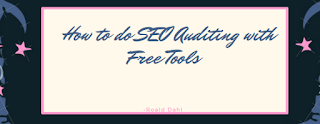The first steps to a new job in Digital Marketing
The first steps to a new job in Digital Marketing
Whether you’re starting out in an industry for the first time, or are ready for your next challenge, the first step when looking for a job is defining what is important to you.
Let’s start by thinking about what you enjoy, and which industries or companies would suit you best. If you could list five things you want from a job, what would they be? Do you love helping people learn, or enjoy working with numbers—or perhaps you want a position that offers flexible hours?
To get to know yourself better, ask your friends, family and colleagues which words they think describe you best and what your greatest strengths are.
Personality tests can also help you recognise the traits that come to you naturally. The most popular one is MBTI, but there are many others available online to choose from.
Once you’ve defined what your dream job could look like, the next step is to identify the skills you have to offer.
Begin by writing down your qualifications, academic achievements and ‘hard skills’ — things that can be defined and measured, like a diploma in accounting, years of experience in web design, or a degree in nursing.
Next, pinpoint what makes you valuable to a company—beyond your work experience or qualifications. For example, leadership, teamwork and communication skills describe how you interact with others. These ‘soft skills’ are becoming more and more important across all industries and are worthwhile highlighting when applying for a job.
To help shortlist your main skills, think of both challenges and successes you’ve encountered in the past, and consider which skills helped you in these situations the most.
After identifying your skills, it’s time to think about how you will persuade potential employers you’re right for the role. This will come across in your CV and cover letter, or might happen naturally during the course of an interview.
Though a request like “Tell me about yourself” may seem quite general and unstructured, keep in mind what the interviewer is really asking for: insights into your professional experiences, and more specifically, how you could add value to that particular role. Instead of presenting yourself as a series of facts, organise your previous experiences into a story. The best stories follow a clear structure and take readers or listeners on a journey— so keep this in mind when telling your own.
Highlight your greatest professional accomplishments. If you are new to an industry, feel free to take general success stories from your life - just make sure that you focus on the transferable attributes relevant to the position being applied for. For example, a personal achievement at university or a volunteering role can be used to demonstrate your great communication or problem solving skills.
Remember to highlight why you want the job and show your potential employer how motivated you are to work for their company.
To wrap up, try to remember these top tips when crafting your pitch to employers:
- identify keywords that best illustrate your skills and abilities
- highlight any relevant professional or academic achievements
- add numbers to make your story more tangible, for example, “3 years experience in web design”, or “in my previous job, I succeeded in reducing yearly costs by 25%”
- tailor your pitch to each role, and review the job description carefully to ensure you address the company’s needs.
Now you’re ready to show potential employers why it’s you they should hire!
Taking these first steps will steer you in the right direction and help you identify which jobs would be the best fit for your talents.
Before you embark on landing that dream job, take a
moment to reflect on what you really want from your new role. Knowing
this can help you identify what to look for throughout your job search
and put your best foot forward. In this video, we'll explore:
Happy reading


Comments
Post a Comment